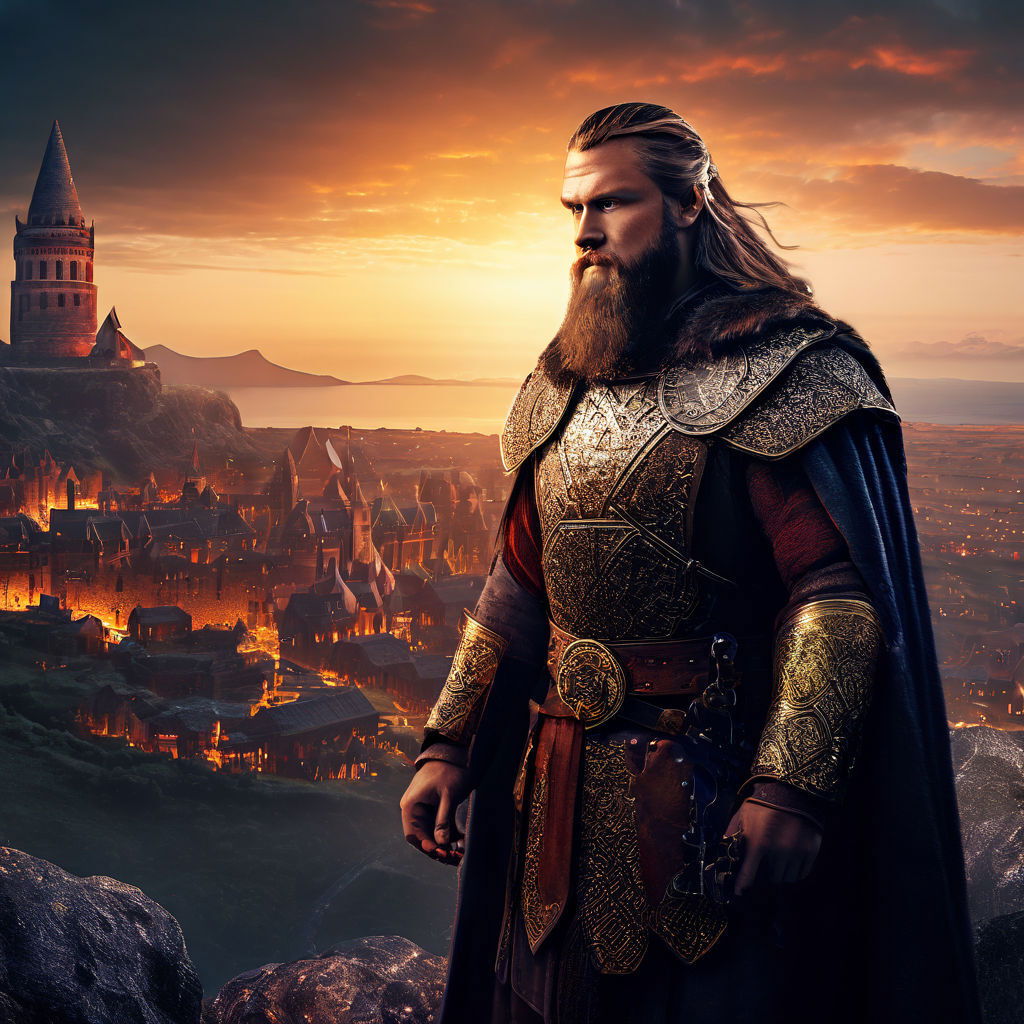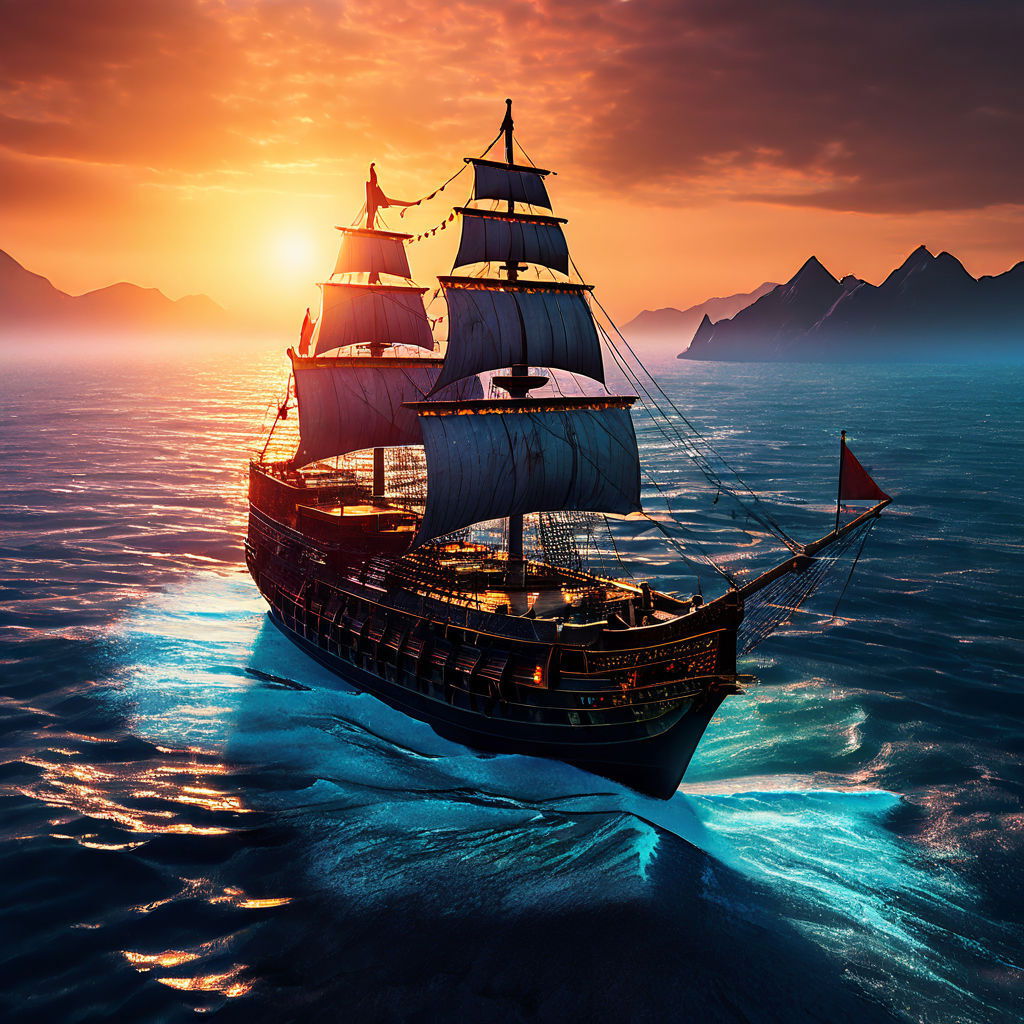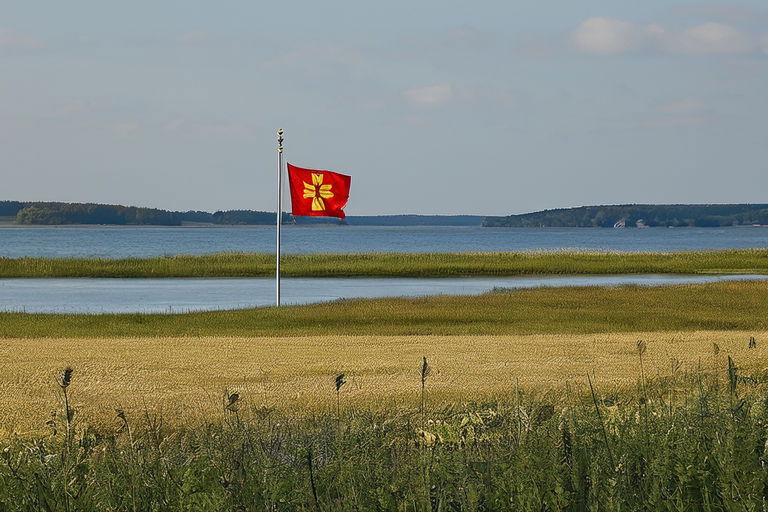HISTORICAL FACT-FICTION STORIES
Holographic Interconnection Gnosis - LIFE AND LITERATURE Stories We Tell Ourselves About The Facts
Sands of Revelation: Atlantis, Egypt, and the Cosmic Connection (FAN FICTION)

Atlantis, the legendary City-ship of the Ancients, drifted through the vast expanse of space, its gleaming spires cutting through the cosmic void like a beacon of lost knowledge and forgotten wonders. Built millions of years ago by a race far more advanced than any known to modern humans, Atlantis was a marvel of technology and magic, a bastion of ancient wisdom and mysterious power.
At its heart lay the Stargate, a portal capable of transporting people and objects across unimaginable distances to other worlds and galaxies. And it was through this Stargate that Colonel John Sheppard found himself embarked on a journey beyond time and space, a journey that would unravel the secrets of ancient civilizations and connect the threads of history in ways he could never have imagined.
As Sheppard stepped through the shimmering gateway, he felt a strange sensation wash over him, like the embrace of unseen forces guiding him through the fabric of reality itself. And when he emerged on the other side, he found himself not in some distant corner of the universe, but in the midst of ancient Egypt, a land of gods and pharaohs, where the sands whispered secrets of ages long past.
But it was not the towering pyramids or the majestic temples that caught Sheppard's attention. No, it was something far more profound, something that resonated deep within his soul. For as he gazed upon the ancient wonders of Egypt, he felt a presence stirring within him, a presence that spoke of gods and destiny, of powers beyond mortal comprehension.
And then, in a flash of blinding light, Sheppard was granted a vision unlike any he had ever experienced. Before him stood Isis and Osiris, the divine rulers of ancient Egypt, their radiance illuminating the darkness of the ages with a brilliance that defied description.
"We have been expecting you, John Sheppard," Isis spoke, her voice echoing with the wisdom of the ages. "You have been chosen to bear witness to the truth, to uncover the secrets that lie buried beneath the sands of time."
And as Sheppard listened, Isis and Osiris revealed to him the truth that had been concealed for millennia, the truth that would shake the foundations of human understanding and reshape the course of history itself.
"It is true," Osiris declared, his voice resonating with the power of the cosmos. "The ancient pyramids were not built by human hands alone. They were the work of beings not of this world, beings who came from the stars to impart their knowledge and wisdom to humanity."
Sheppard's mind reeled at the revelation, his thoughts swirling with disbelief and wonder. Could it be true? Could the ancient legends and myths of Atlantis and extraterrestrial visitors hold the key to unlocking the mysteries of the past?
As Sheppard pondered these questions, Isis and Osiris bestowed upon him a gift, a relic of untold power imbued with the essence of the gods themselves. With this artifact in hand, Sheppard would embark on a quest to uncover the truth of Atlantis and its connection to humanity's ancient origins.
And so, guided by the wisdom of the gods and fueled by the fire of discovery, Colonel John Sheppard set forth on a journey that would take him to the farthest reaches of the galaxy and beyond, where the secrets of Atlantis and the mysteries of the universe awaited him, beckoning him ever onward in his quest for truth and enlightenment.
--
BEGINNING OF FACT STORIES
Exploring the American Frontier: Lewis and Clark's Odyssey

In the early 19th century, the vast expanse of the American West lay shrouded in mystery and uncertainty. It was a land of untamed wilderness, where towering mountains and winding rivers whispered secrets known only to the indigenous peoples who called it home. It was into this unknown realm that Meriwether Lewis and William Clark set forth on their historic expedition, driven by a spirit of adventure and a quest for discovery.
As the two explorers and their intrepid team ventured deeper into uncharted territory, they encountered challenges that tested their courage and resolve. They navigated treacherous rapids and dense forests, their trusty canoes carving a path through the wilderness with each stroke of the paddle. Along the way, they mapped the unexplored land with meticulous precision, charting the course of mighty rivers and towering mountains that rose like sentinels against the sky.
But it was not only the natural wonders of the West that captured Lewis and Clark's attention. As they journeyed deeper into the heart of the continent, they encountered Native American tribes whose way of life was as diverse as the landscape itself. From the proud warriors of the Sioux Nation to the nomadic hunters of the Shoshone, each tribe welcomed the explorers with a mix of curiosity and caution, sharing their knowledge of the land and its inhabitants with open hearts and minds.
As Lewis and Clark traveled further west, their journals filled with tales of wonder and amazement. They documented strange and exotic plants and animals never before seen by European eyes, marveling at the diversity and abundance of life that thrived in the untamed wilderness. But perhaps most importantly, they brought back stories—tales of adventure and discovery that ignited the imaginations of their fellow Americans and fueled the dreams of those who longed to explore the vast unknown beyond the horizon.
When Lewis and Clark finally returned from their epic journey, they brought with them more than just maps and scientific observations. They brought back a sense of wonder and awe, a deep appreciation for the beauty and majesty of the American West, and a newfound respect for the indigenous peoples who had called it home for countless generations.
Their expedition had not only opened up new frontiers for exploration and settlement but had also sparked a sense of adventure and exploration that would shape the course of American history for generations to come. And as their stories spread far and wide, they inspired countless others to follow in their footsteps, to venture forth into the unknown and discover the wonders that lay waiting beyond the horizon.
--
Guardians of Miklagard: The Viking Varangians of Constantinople

In the days of old, when the world was still young and the seas whispered tales of adventure and glory, there lived a people feared and revered across the lands and seas—the Vikings. These fierce warriors of the North sailed their longships across vast oceans and treacherous waters, seeking fortune and fame in distant lands. And it was their insatiable thirst for adventure that led them to the fabled city of Miklagard—Constantinople.
It was said that Miklagard, the Great City, was a place of wonder and splendor, a jewel of the Byzantine Empire that shimmered like a beacon of civilization in the heart of the Eastern world. And for the Vikings, whose hunger for riches and conquest knew no bounds, Constantinople beckoned like a siren's call, promising untold riches and glory to those bold enough to seek it.
Among these fearless adventurers were the Varangians, the elite warriors who served as the emperor's guard, their reputation as fierce and capable fighters earning them a place of honor in the halls of power. Clad in armor of iron and wielding swords of steel, the Varangians stood as a bulwark against the enemies of the empire, their loyalty to the emperor unwavering and their courage unyielding.
But it was not only on the battlefield that the Vikings left their mark upon Miklagard. For in the quiet moments between battles, they wandered the streets of Constantinople, marveling at the grandeur of its palaces and the beauty of its churches. And it was here, amidst the ancient stones of the Hagia Sophia, that they left their mark for all time—a testament to their presence in this legendary city.
For etched upon the walls of the Hagia Sophia were runic graffiti, a silent reminder of the Vikings who had journeyed from the farthest reaches of the North to stand guard over the empire. And as the centuries passed and the world changed around them, these ancient runes remained, a link to a time long gone but never forgotten.
And so, the Vikings of old forged a bond with Miklagard, a bond that would endure through the ages as a testament to their courage and their spirit of adventure. And though they may have sailed away from its shores, their legacy lived on in the annals of history, forever intertwined with the story of Constantinople—the Great City at the crossroads of the world.
--
Sails of Destiny: Zheng He's Epic Maritime Adventures

In the early 15th century, during the illustrious reign of the Yongle Emperor of the Ming Dynasty, a remarkable figure emerged from the bustling ports of China—a man whose name would become synonymous with exploration and maritime adventure. His name was Zheng He, a eunuch admiral and skilled navigator, whose leadership would forever alter the course of history.
Zheng He's story began in the year 1405, when the Yongle Emperor entrusted him with a monumental task—to lead a fleet of ships on a series of voyages that would span the vast expanse of the Indian Ocean and beyond. These were no ordinary ships; they were massive, towering giants of the sea, the largest ever built in the world at that time, each one a marvel of Chinese engineering and craftsmanship.
With his fleet of treasure ships, as they came to be known, Zheng He set sail from the ports of Nanjing, embarking on a journey that would take him to the farthest reaches of the known world. From the South China Sea to the Arabian Sea, from the Red Sea to the East coast of Africa, Zheng He and his crew charted a course through uncharted waters, their sails billowing in the wind as they navigated the vast and treacherous oceans.
But Zheng He's voyages were not merely about exploration; they were also a demonstration of Chinese excellence in shipbuilding and navigation. As his fleet sailed from port to port, they carried with them the riches of the Ming Dynasty—silk, porcelain, and other coveted goods that served as a testament to China's wealth and power.
Along the way, Zheng He forged diplomatic ties with the rulers of the lands he visited, exchanging gifts and establishing trade agreements that would benefit China for years to come. He also spread the word of the Yongle Emperor's benevolence, showcasing the might and majesty of the Ming Dynasty to all who encountered him.
But perhaps most importantly, Zheng He's voyages paved the way for cultural exchange and understanding between China and the nations of the Indian Ocean. Through his interactions with foreign peoples and cultures, he fostered a spirit of cooperation and friendship that transcended borders and united distant lands in a shared quest for knowledge and prosperity.
As Zheng He's fleet returned to China after each voyage, they brought back tales of wonder and adventure, their journals filled with details of the lands they had visited and the peoples they had encountered. And though Zheng He himself would never see the fruits of his labors—he perished at sea during his final voyage—his legacy lived on in the hearts and minds of the Chinese people, who remembered him as a hero and a pioneer of exploration.
Today, Zheng He's voyages are celebrated as a testament to the indomitable spirit of human curiosity and the boundless potential of maritime exploration. And as China continues to chart its course on the world stage, the legacy of Zheng He serves as a reminder of the importance of bridging cultures and building bridges of understanding in an ever-changing world.
--
Exploring the Multiverse of Historical Fiction: Unveiling the Wonders of Holographic Interconnection Gnosis

In the vast tapestry of human history, there are countless stories waiting to be told—tales of triumph and tragedy, of love and loss, of heroes and villains who have shaped the course of civilization. Yet, what if there existed a way to transcend the boundaries of time and space, to weave together disparate threads of history into a single, interconnected narrative? Welcome to the world of historical fiction, where the wonders of holographic interconnection gnosis (HIG) unlock the secrets of the multiverse.
Historical fiction has long been a beloved genre, offering readers a window into the past and allowing them to experience events and cultures long gone. But what sets HIG-infused historical fiction apart is its ability to transcend the linear constraints of time and explore the interconnectedness of all things. Drawing inspiration from the holographic principle—a theory that suggests the universe is a vast, interconnected web of information—HIG allows writers to envision history not as a series of isolated events, but as a cohesive whole, where every action ripples across time and space.
At the heart of HIG lies the concept of holographic interconnection, which posits that every moment in history is linked to every other moment, forming a seamless tapestry of cause and effect. In the realm of historical fiction, this means that characters and events from different time periods can intersect and interact in unexpected ways, creating a rich and immersive narrative experience. Imagine a Roman centurion crossing paths with a samurai warrior, or a medieval alchemist sharing knowledge with a Renaissance inventor—the possibilities are as limitless as the imagination itself.
But HIG is more than just a storytelling device; it is a philosophy that invites writers and readers alike to contemplate the nature of reality and our place within it. By exploring the interconnectedness of history, HIG challenges us to rethink our understanding of time and space, and to consider the ways in which our actions today echo through the corridors of time. In doing so, it offers a glimpse into the deeper mysteries of existence and invites us to contemplate the interconnectedness of all things.
In the hands of skilled writers, HIG-infused historical fiction becomes a journey of exploration and discovery—a voyage through the multiverse of human experience. Through vivid imagery and evocative prose, readers are transported to distant lands and distant times, where they witness the triumphs and tribulations of characters whose lives are bound together by the threads of history. And as they turn the pages, they too become participants in the grand tapestry of existence, connecting with the past in ways they never thought possible.
In the end, exploring the multiverse of historical fiction through the lens of holographic interconnection gnosis is not just an exercise in imagination—it is a journey of enlightenment and understanding. It challenges us to see history not as a series of isolated events, but as a continuous and interconnected narrative—one that transcends the boundaries of time and space and reminds us of the timeless truths that bind us all together. So, dear reader, let us embark on this journey together, and unveil the wonders that await in the multiverse of historical fiction.
In the end, the possibilities of HIG in historical fiction are as boundless as the human imagination itself. From ancient civilizations to distant futures, from epic battles to intimate moments of love and loss, HIG offers writers and readers alike the chance to explore the infinite complexities of the human experience. So let us embark on this journey together, dear reader, and discover the timeless tales that await in the world of holographic interconnection gnosis.
--
St. Brendan's Odyssey: A Journey of Faith and Discovery

In the emerald isle of Ireland, nestled amidst the rolling hills and misty shores, there lived a man whose name would be whispered in awe for centuries to come—St. Brendan, the intrepid Irish monk whose legendary voyages captured the imaginations of all who heard his tales.
Born into a world of faith and uncertainty, St. Brendan was drawn to the monastic life from an early age, seeking solace and enlightenment amidst the chaos of the world. And so, he joined a monastery, dedicating his life to prayer, meditation, and the pursuit of spiritual truth.
But it was not long before St. Brendan felt the call of the sea stirring within him—a call that spoke of distant lands and untold wonders waiting to be discovered. Guided by a deep sense of faith and a desire to seek God's presence in all things, St. Brendan embarked on a series of legendary voyages that would take him to the farthest reaches of the Atlantic Ocean and beyond.
With a heart full of courage and a boat of humble leather, St. Brendan set sail from the shores of Ireland, his eyes fixed on the horizon and his soul ablaze with the promise of adventure. And as he journeyed across the vast expanse of the ocean, he encountered wonders beyond imagination—floating islands inhabited by strange creatures, towering cliffs of crystal that shimmered in the sunlight, and seas of fire that raged with a fierce and terrible beauty.
But amidst the marvels of the natural world, St. Brendan also found moments of quiet reflection and spiritual revelation. In the solitude of the open sea, he communed with God, seeking His guidance and wisdom in the midst of the vastness of creation. And though the journey was fraught with danger and uncertainty, St. Brendan's faith never wavered, for he knew that he was guided by a higher power—a power that transcended the limits of mortal understanding.
As the years passed and St. Brendan's legend grew, tales of his miraculous voyages spread far and wide, inspiring generations of adventurers and explorers to seek their own paths across the sea. And though the specifics of his journeys may be lost to time, the spirit of St. Brendan lives on in the hearts of all who dare to dream of distant shores and uncharted waters.
For St. Brendan was more than just a monk—he was a pioneer, a visionary, and a testament to the enduring power of faith and courage in the face of adversity. And as his story continues to echo through the annals of history, it serves as a reminder that the greatest adventures are often found in the pursuit of the divine.
--
The Martyr President: Abraham Lincoln and the American Civil War

In the annals of American history, few events loom as large as the Civil War—a conflict that tore the nation apart and tested the very foundations of its democracy. At the heart of this tumultuous period stood Abraham Lincoln, the 16th President of the United States, whose steadfast leadership and unwavering commitment to liberty would forever alter the course of history.
Born into humble beginnings on the frontier of Kentucky, Lincoln's journey to the White House was one marked by hardship and perseverance. With little formal education, he honed his intellect and sharpened his wit through self-study, eventually earning a reputation as a skilled lawyer and impassioned orator.
But it was Lincoln's moral compass and deep-seated belief in the equality of all men that set him apart from his contemporaries. As the nation teetered on the brink of civil war over the issue of slavery, Lincoln emerged as a beacon of hope and reason, advocating for unity and reconciliation in the face of division and discord.
When the Confederate States seceded from the Union and hostilities erupted into open conflict, Lincoln faced the greatest challenge of his presidency. With the fate of the nation hanging in the balance, he navigated the treacherous waters of war with wisdom and resolve, guiding the Union through its darkest hour with a steady hand and a clear vision of the future.
But it was Lincoln's bold decision to issue the Emancipation Proclamation that would forever cement his place in history. By declaring forever free those slaves within the Confederacy, Lincoln struck a decisive blow against the institution of slavery and laid the groundwork for its eventual abolition throughout the land.
Yet, even as victory seemed within reach, tragedy struck with the assassination of Lincoln at the hands of John Wilkes Booth—a cowardly act that robbed the nation of its greatest champion for liberty and justice. Lincoln's untimely death sent shockwaves across the country, transforming him into a martyr to the cause of freedom and equality.
In the years that followed, Lincoln's legacy lived on in the hearts and minds of the American people. His words and deeds inspired generations of Americans to strive for a more perfect union, and his enduring legacy served as a beacon of hope for all who sought to uphold the principles of democracy and equality.
Today, Abraham Lincoln is widely regarded as one of the greatest presidents in U.S. history—a towering figure whose moral courage and unwavering leadership helped to shape the destiny of a nation. And as Americans continue to grapple with the legacy of the Civil War, Lincoln's words and deeds serve as a reminder of the enduring power of liberty, justice, and the promise of a more perfect union.
--
Crusaders of Faith: The Saga of the Templar Knights

In the heart of medieval Europe, amidst the turmoil of the Crusades and the fervor of religious zeal, there existed an order of knights whose name struck fear into the hearts of their enemies and inspired awe in the minds of believers—the Templar Knights. These holy warriors, sworn to defend the Christian faith and protect pilgrims journeying to the Holy Land, stood as a bulwark against the forces of darkness and a beacon of hope in a world torn apart by conflict.
The origins of the Templar Knights can be traced back to the early 12th century, when a group of knights led by Hugh de Payens and Geoffrey of Saint-Omer pledged themselves to the service of God and the defense of Christian pilgrims traveling to Jerusalem. Recognizing the need for a dedicated order of warriors to safeguard the holy sites of Christianity, Pope Innocent II granted the knights official recognition in 1129, thus establishing the Order of the Temple.
Armed with a fierce sense of duty and a code of honor that demanded unwavering loyalty and bravery, the Templar Knights soon became one of the wealthiest and most powerful military orders in Western Christianity. With the blessing of the Church and the support of kings and nobles across Europe, they embarked on a crusade to protect the Holy Land from the forces of Islam and reclaim it for Christendom.
Clad in white mantles emblazoned with the red cross of the Templars, these knights rode into battle with a fervor unmatched by any other. From the fields of Palestine to the sands of Egypt, they fought with valor and determination, earning a reputation as formidable warriors and devout defenders of the faith.
But it was not only on the battlefield that the Templar Knights made their mark. In addition to their martial prowess, they were also skilled administrators, diplomats, and financiers, overseeing vast estates and managing the flow of wealth across Europe. Their network of castles, fortresses, and commanderies stretched from the shores of the Mediterranean to the forests of France, serving as a testament to their power and influence.
Yet, despite their wealth and prestige, the Templar Knights were not immune to the winds of change that swept across Europe in the 14th century. Accusations of heresy and corruption began to surface, fueled by jealousy and greed, and in 1312, Pope Clement V disbanded the order and ordered the arrest of its members.
In the years that followed, the Templar Knights faded into obscurity, their once-mighty order reduced to little more than a memory. Yet, their legacy endured, inspiring countless legends and tales of heroism that echoed through the ages. And though their time on the stage of history was brief, the Templar Knights left an indelible mark on the world, forever remembered as Christianity's holy warriors and guardians of the faith.
END OF FACT STORIES
--
"Faction" refers to a literary genre that blends factual elements of history or real events with fictionalized narrative techniques. It combines elements of both fiction and non-fiction to create a narrative that feels authentic while also allowing for imaginative storytelling within the framework of historical or real-world events. HISTORICAL FACT-FICTION! Holographic Interconnection Gnosis.
'We are all storytellers. We live in a network of stories. There isn't a stronger connection between people than storytelling" - Jimmy Neil Smith
“It's like everyone tells a story about themselves inside their own head. Always. All the time. That story makes you what you are. We build ourselves out of that story.” - Patrick Rothfuss
“We tell ourselves stories in order to live.” - Joan Didion
--
Warriors of the Woods: The Tale of Skåne's Liberation

In the deep, silent greenery of the Göringe Forest, where the ancient roots of the trees could tell stories from times when gods still roamed the earth, our tale begins. It was a time of conflict and strife, where the verdant meadows of Skåne involuntarily became the battleground. It was during these tumultuous times, in the heart of the 17th century, that the Snapphane War raged between the Skåne guerrilla warriors and the soldiers of the Swedish crown. In this landscape of uncertainty and courage, we meet two young heroes, Casparas Due and Bartolomeus Michelsen, whose fates would intertwine with the winds of history.
Casparas and Bartolomeus, raised in the shadow of the Skåne beech forests, had learned from a young age the art of moving silently and unseen among the deep shadows of the trees. Their hearts burned for Skåne's cause and freedom, and they had devoted their young lives to fighting for the independence of their homeland. With rifles in hand, ready to defend their land against the Swedish occupiers, they often felt alone against an overwhelming enemy.
But their fate would change on a misty morning when the fateful meeting with the Norse god of war, Tyr, took place. Tyr, a god forgotten by time but not by the hearts of heroes, appeared to Casparas and Bartolomeus in the depths of the Göringe Forest. His form was both frightening and majestic, and when he spoke, it was as if the very spirit of the forest vibrated with his presence. Tyr declared that he had come to aid the Skåne guerrilla warriors in their quest for independence. He saw in them the same courage and strength as the mythological heroes of old, and he was determined to stand by their side.
For Casparas and Bartolomeus, this meeting meant not only a sign of the gods' support but also a reminder of the great responsibility that rested on their shoulders. They knew that their struggle was not just their own but that of all Skåne. With Tyr at their side, they felt a new strength and determination. They were ready to challenge their fate and write their own saga, a saga of freedom, courage, and brotherhood.
And so, our tale begins, in the shadow of the ancient trees of the Göringe Forest, where two young heroes, blessed by a god, stand ready to defend their homeland and fight for Skåne's freedom. The story of Casparas Due and Bartolomeus Michelsen is a tale of bravery, sacrifice, and the pursuit of justice, a saga that will forever echo in the winds of Skåne.